

On Saturday, while we were visiting Ascoli Piceno, Anne felt a tickle in her throat. On Sunday, the tickle had turned into a full out cold. We found a pharmacy that was open and they tested her for COVID. This is the 1st time either of us had a COVID test. It tickles. And the results were negative! She didn't feel too bad, other than sounding really funny, and Francesco suggested that we go visit the Tempio del Valadier and other spots in that area. This is near the Frasassi Caves and Genga; in 2018, when we toured the caves and Genga, the Tempio del Valadier was slighted. So we were excited when Francesco suggested that we go there. Unfortunately Doni could not join us, because she had caught the flu from her brother! Anne wore her face mask much of the day to protect the two men.
The more official name of this location is Sanctuary of Santa Maria infra Saxa. There are two sanctuaries here, one from around the year 1000 and the other from the early 1800s. The site became associated with Giuseppe Valadier, an architect who lived around 1800, because the newer of the two buildings was designed in his style. He was not actually involved with the project, though. Below, interspersed with our photographs and commentary, we have the information (translated from Italian) contained in the pamphlet we picked up at the site.
Inside the Frasassi Gorge, at about 300 meters above sea level, on the slope of Mount Frasassi, a majestic cavity opens up in the mountain, a 400 meter long natural cave, called the Cave of the Blessed Virgin.
The gorge is certainly deep, and Mount Frasassi is imposing.
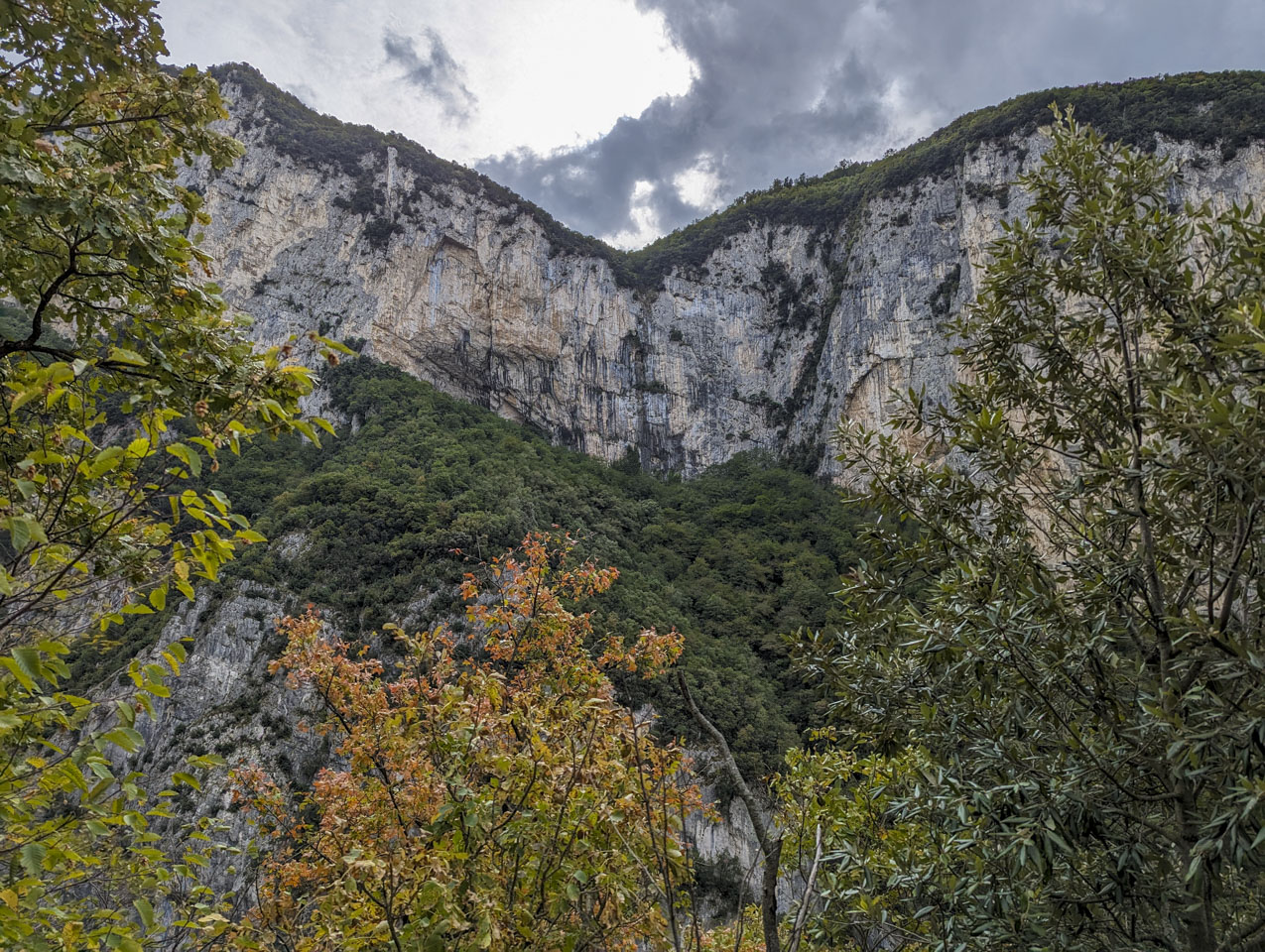
The view as we approached the cave:
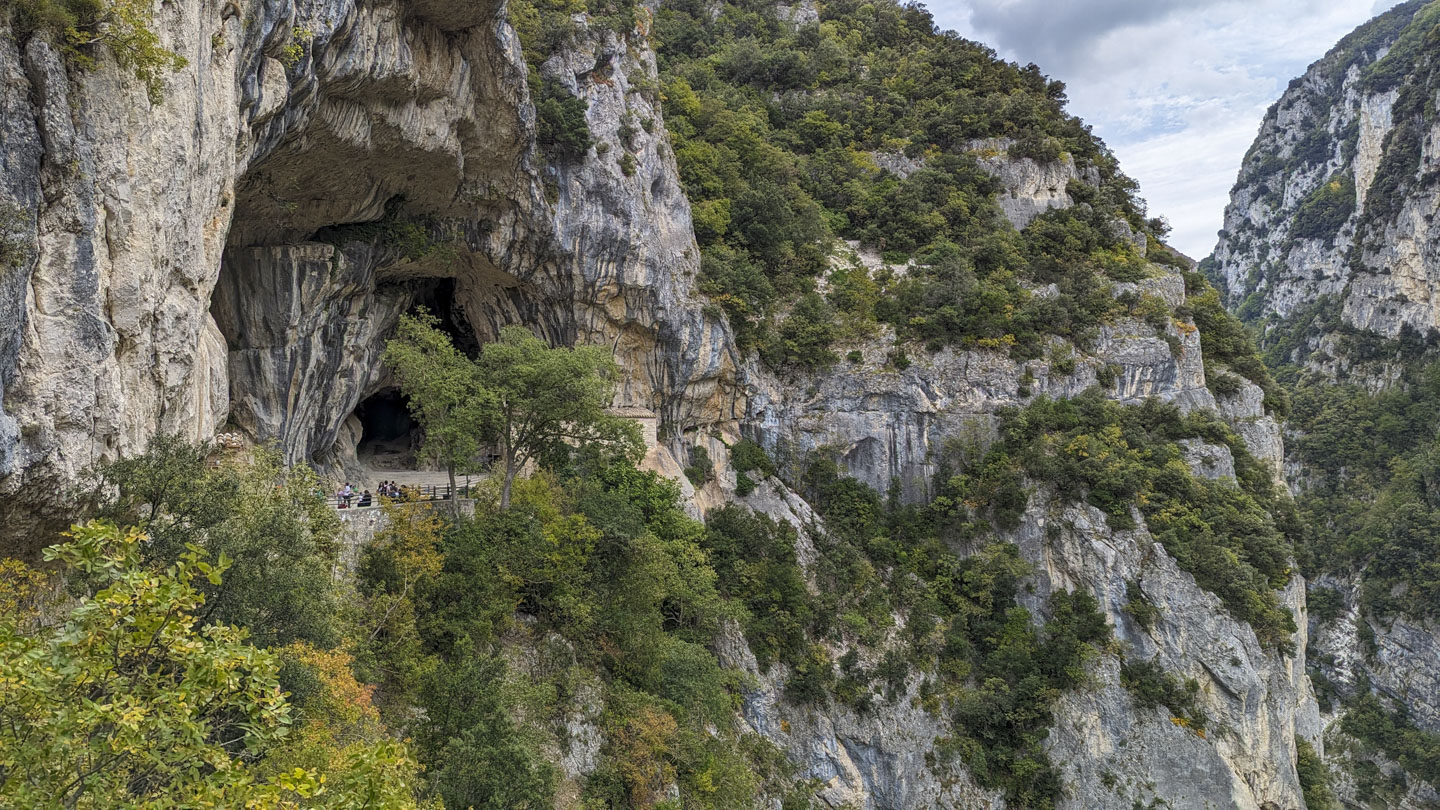
There was protection from rockslides.
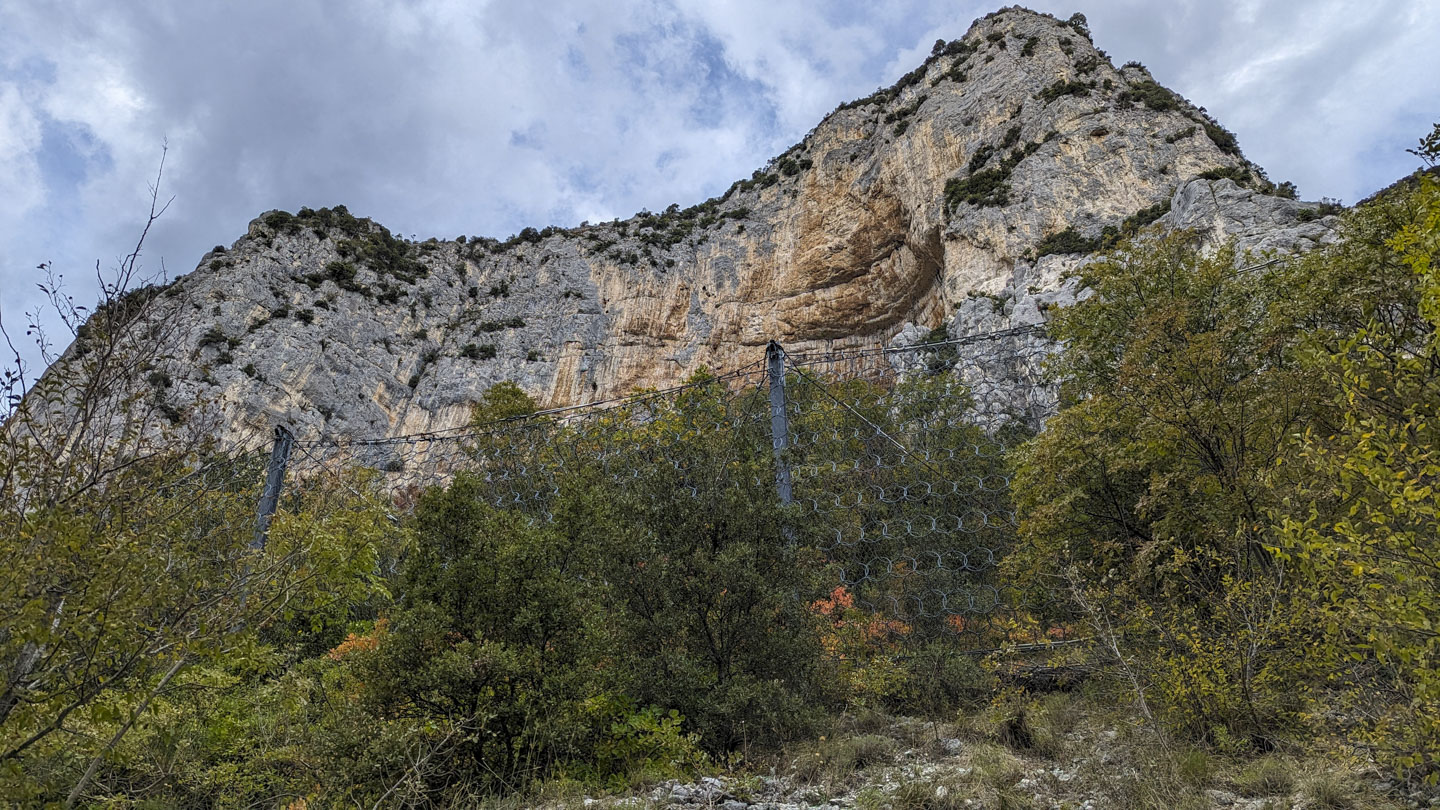
Looking back, you can see the road far below, and if you look closely you can see some netting that protects motorists from falling rocks. The second picture has a better view of that netting.
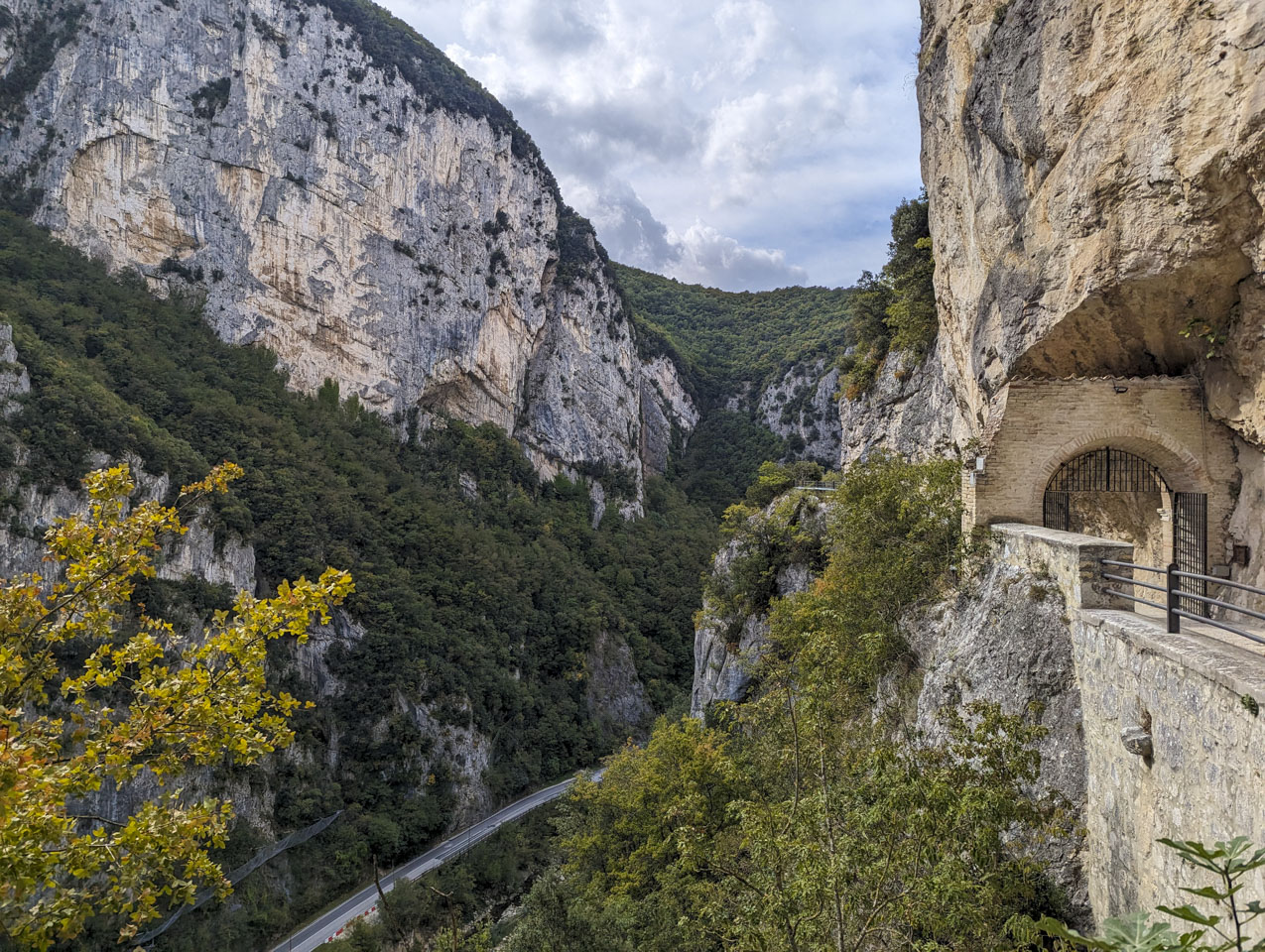
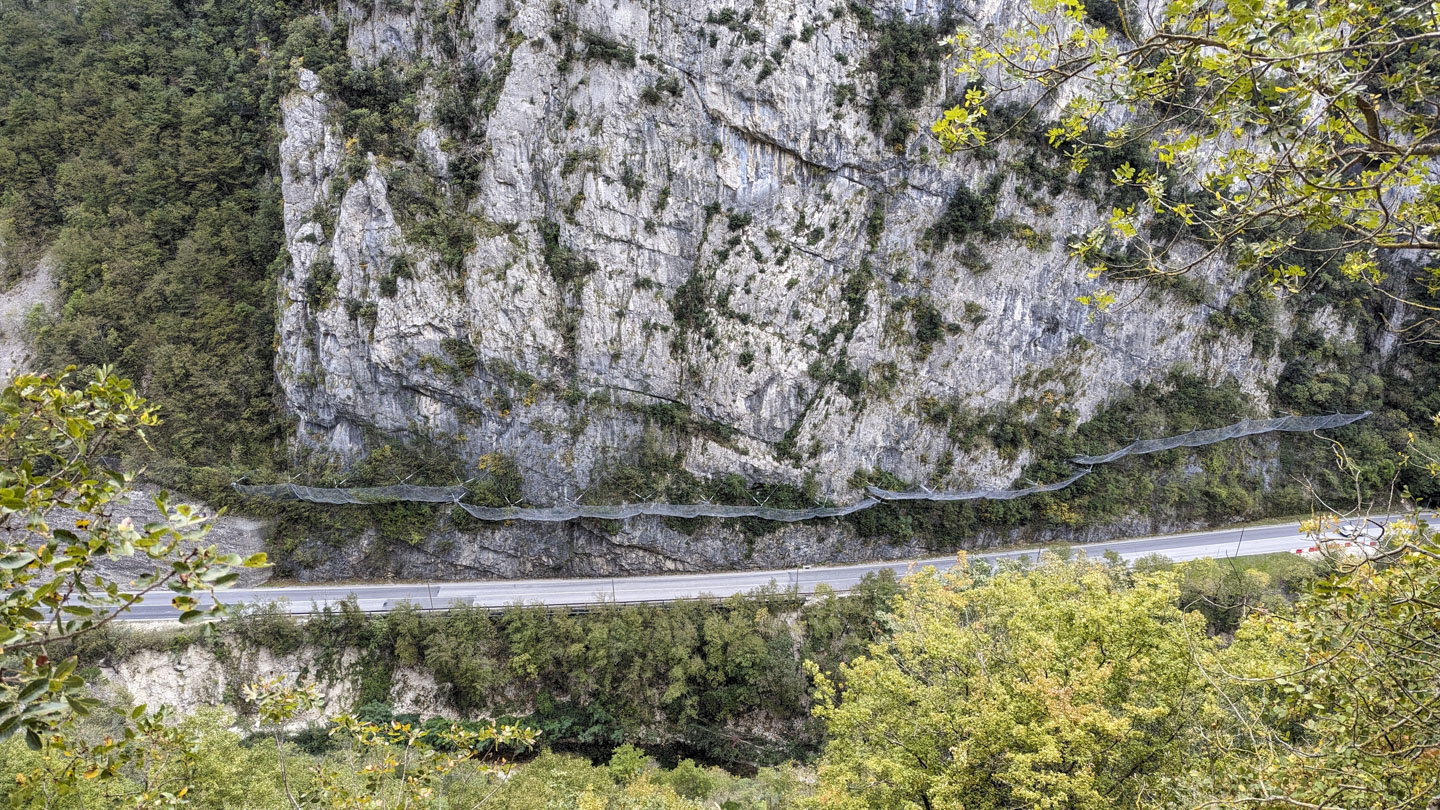
At the center of this cave stands the Madonna di Frasassi Sanctuary, also called the Temple of Valadier because, due to its stylistic forms, it is traditionally attributed to the architect Giuseppe Valadier. In neoclassical style, it was commissioned in 1819 by the cardinal Annibale della Genga, the future Pope Leo XII, and inaugurated in 1828. Built in local stone, the limestone rock, using a quarry upstream from the cave, it has an octagonal plan and a dome entirely covered with lead plates.
Even today this spot can be slightly difficult to get to, so you can imagine that many years ago it would have been even more isolated, quiet, and removed from daily life. These factors add up to a perfect spot to create a sanctuary, despite of and because of the difficulties in getting there and building the buildings.
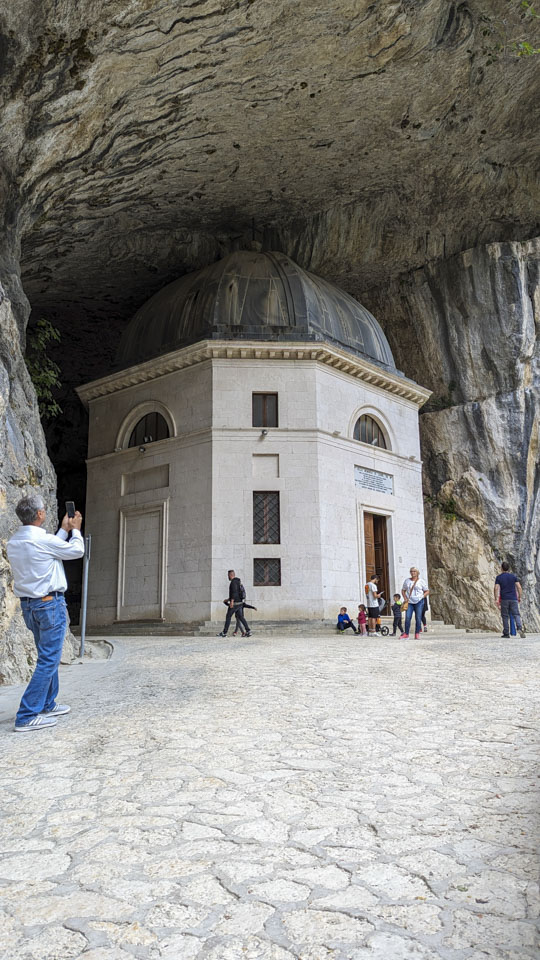
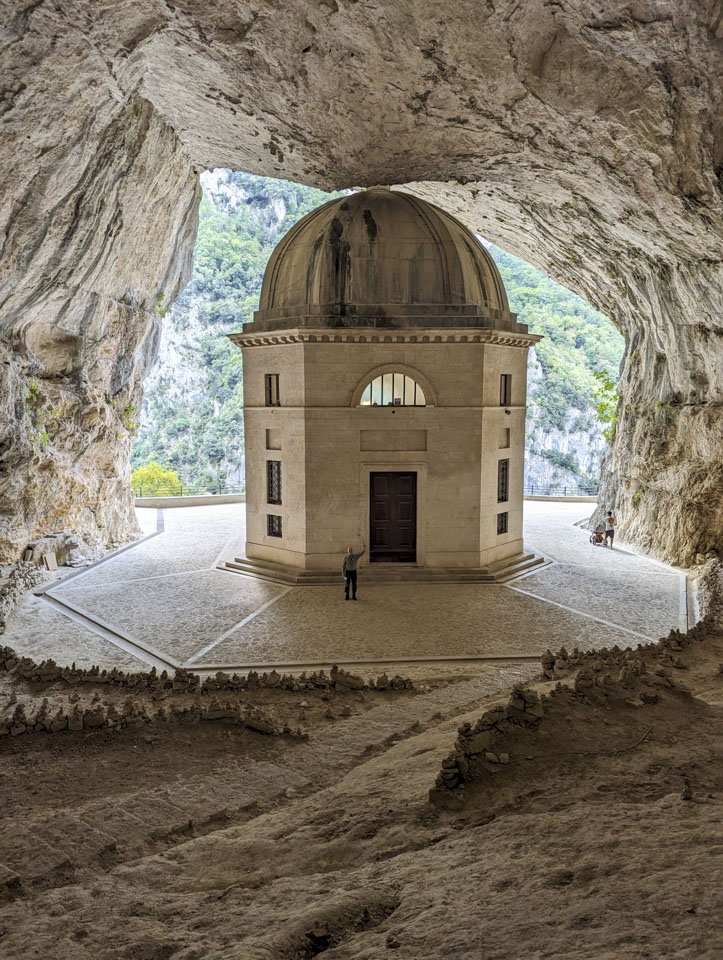
There was a statue in tribute to Pope Leo XII who, as mentioned above, had the chapel built.
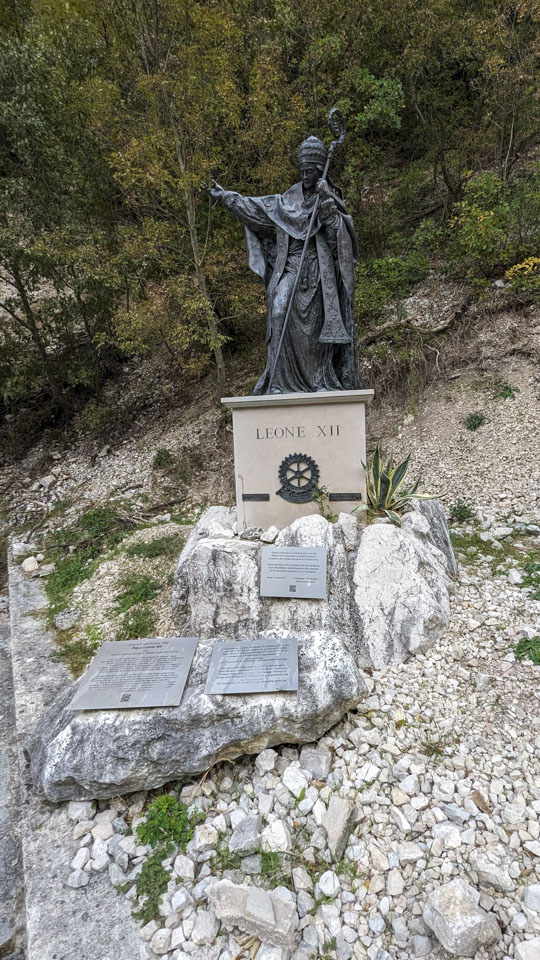
On the altar built with local alabaster there is a copy of the Madonna and Child in white Carrara marble, the original of which is exhibited in the Genga Museum «Arte Storia Territorio», a work attributed to the school of Antonio Canova.
We saw the original in the museum in 2018. Here is the version in situ.
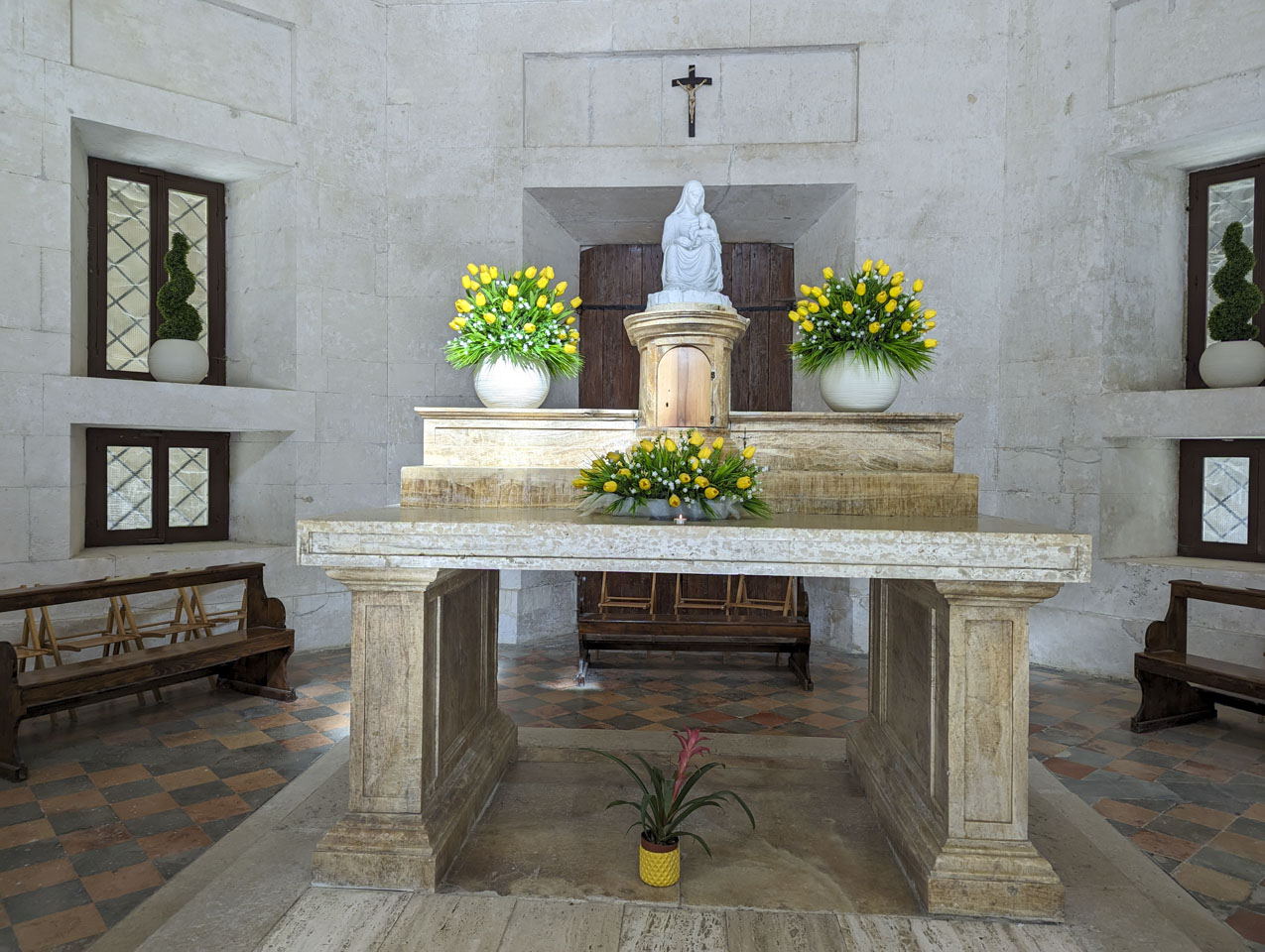
The place can be reached on foot, along a paved avenue, surrounded by vegetation, which begins in Piazzale Fedeli, and is the chosen setting for one of the most beautiful living nativity scenes in Le Marche, the first in terms of number of extras (there are around 300 participants) and for the attention to detail of the representation: the costumes of the Three Kings, for example, faithfully reproduce those represented in the Adoration of the Magi by Gentile in Fabriano.
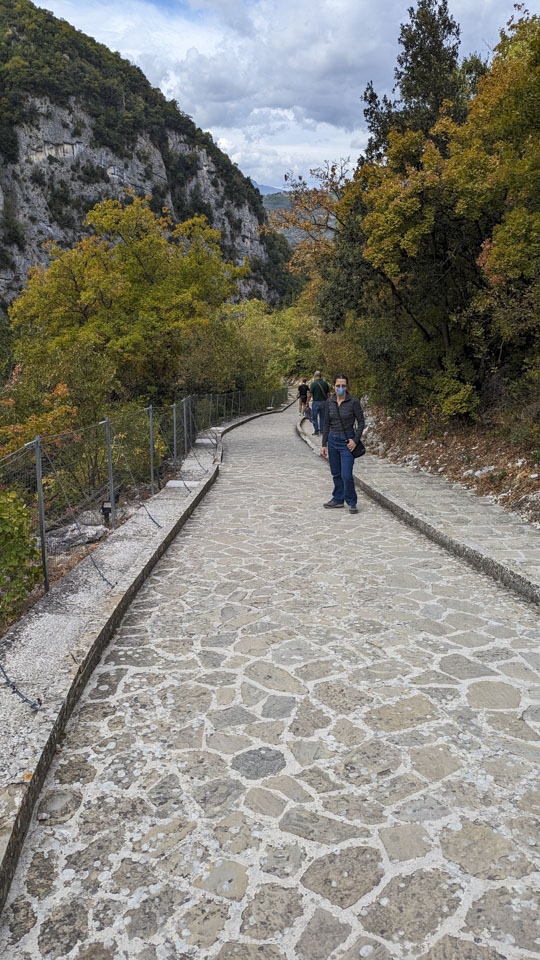
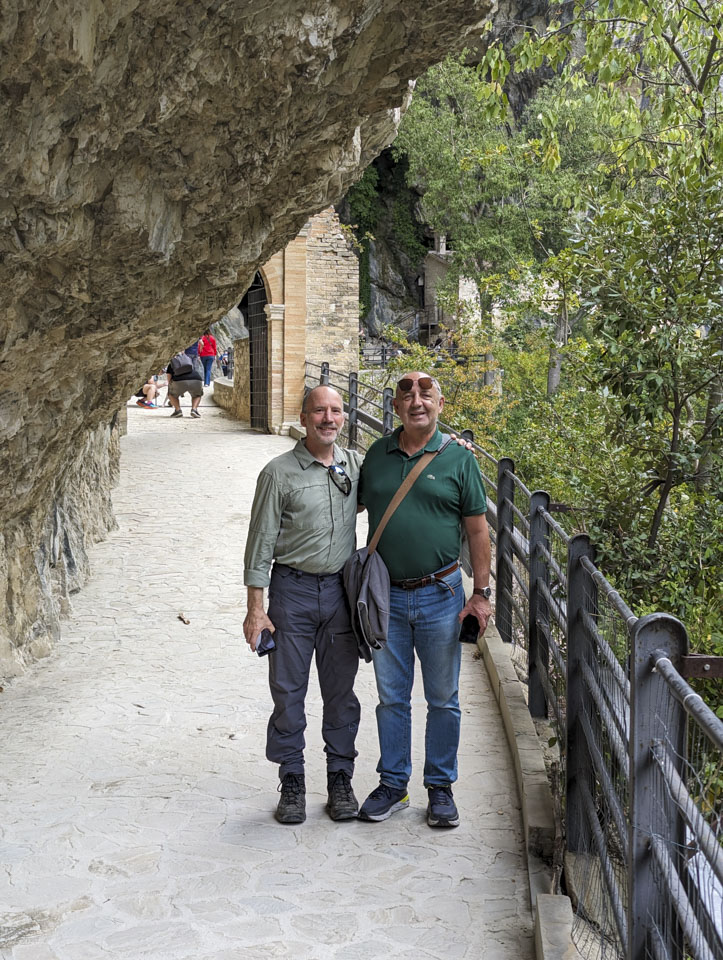
We were not there during a production of the nativity scene, but the area behind the temple is used for it.
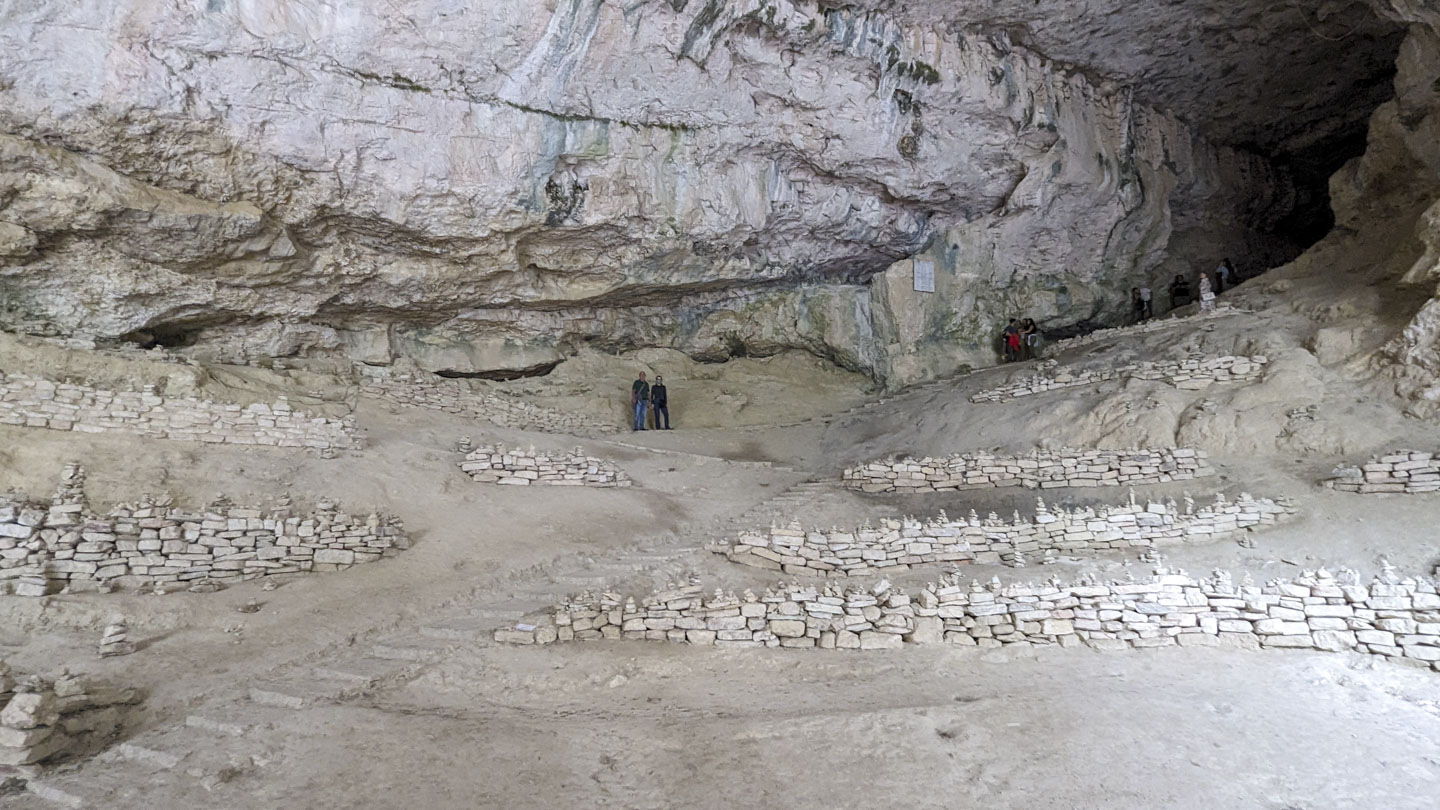
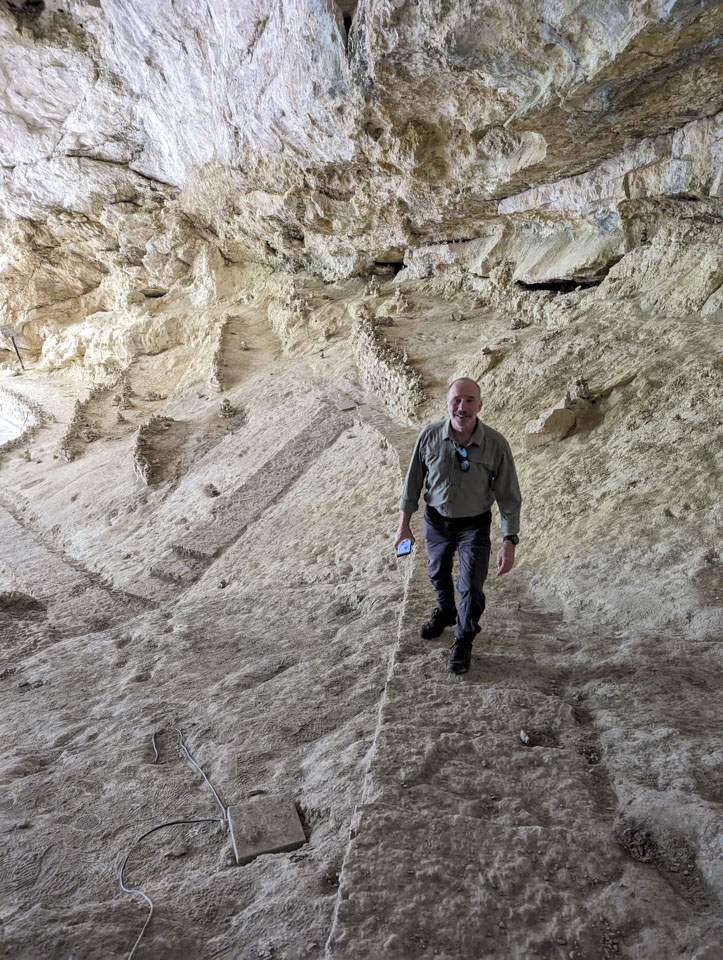
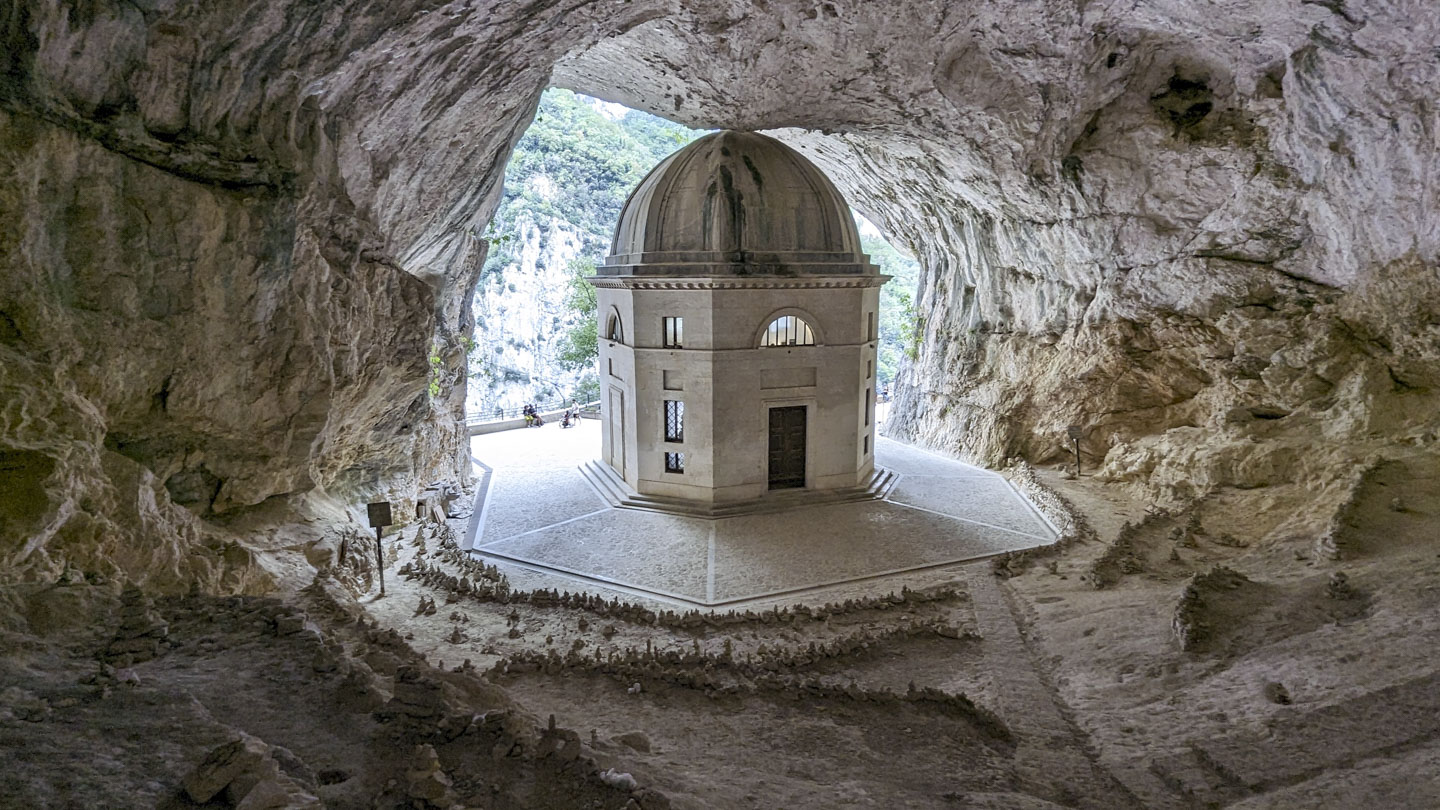
During the construction works of the sanctuary, various artefacts and human bones emerged, evidence that, since prehistoric times, this cave and the others in the Frasassi Gorge have been used and frequented by man not only as shelters or shelters, but above all as places of worship and with funerary functions. Archaeological finds from some of these caves, dating back to the Paleolithic and Neolithic, are exhibited at the Speleopaleontological and Archaeological Museum, at the abbey of San Vittore delle Chiuse. Prelude to a dark and secret but at the same time fantastic world, the cave is always a symbolic place, seat of cults and legends, archetype of the maternal womb and of the world.
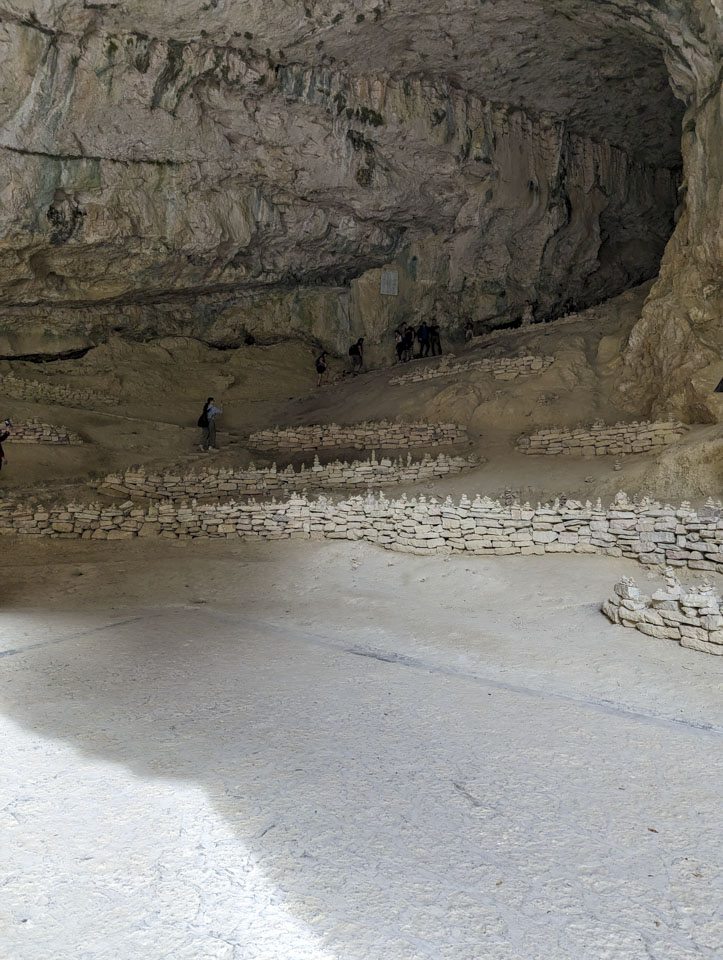
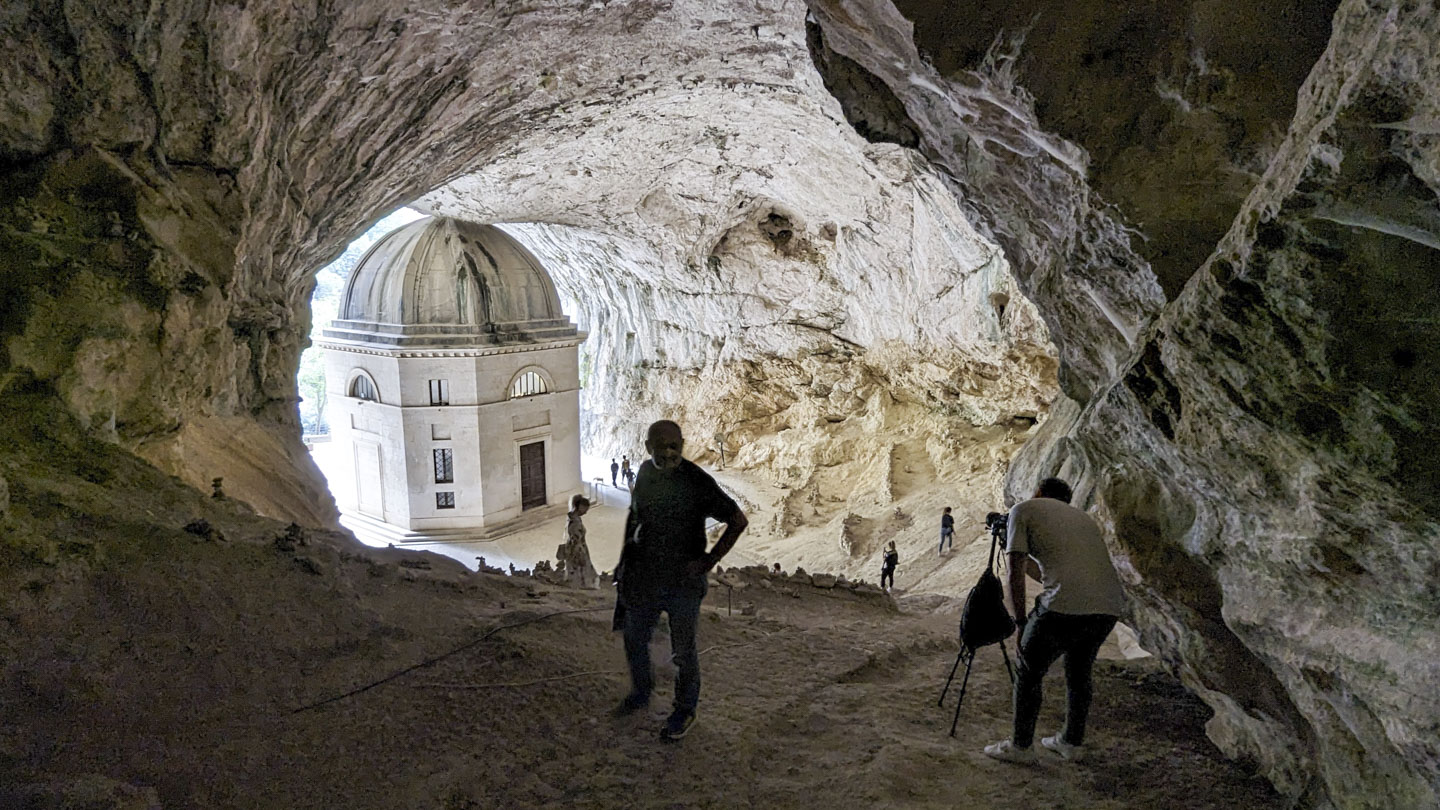
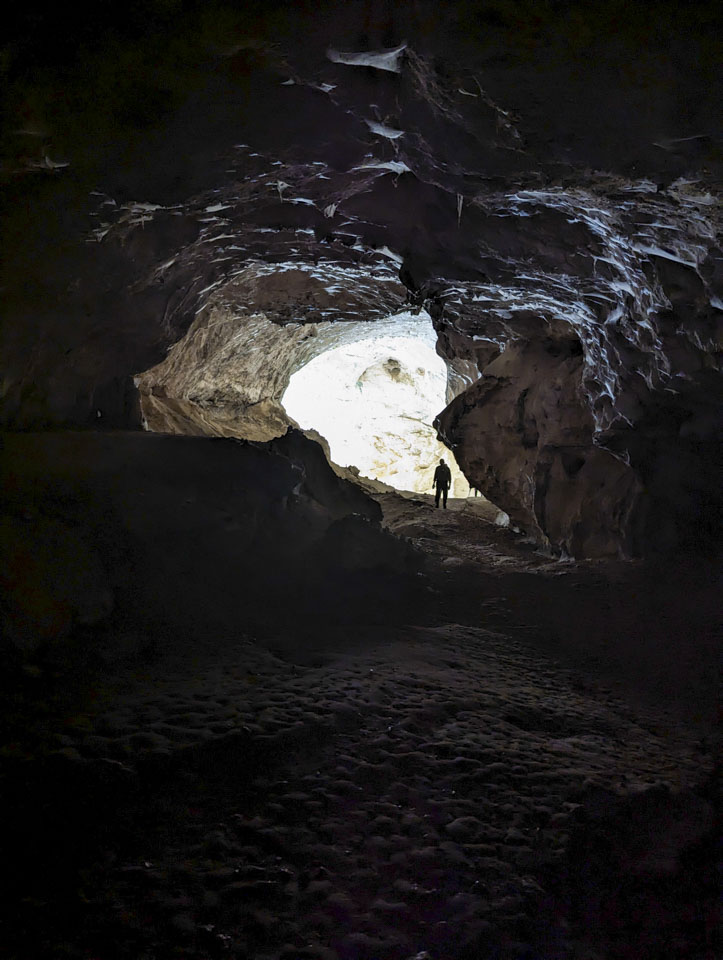
From prehistory to the Christian era, the cave represented a place full of meanings linked to life, death and various forms of spirituality until it became the ideal place for hermitic experiences witnessed by important figures who left evident signs in our territory such as San Romualdo or San Silvestro. Experiences that were not only the legacy of the male world, but which were also practiced by women; in fact, female monasticism seems to be older than male monasticism.
This is the entrance to a second, smaller cave at the same site.
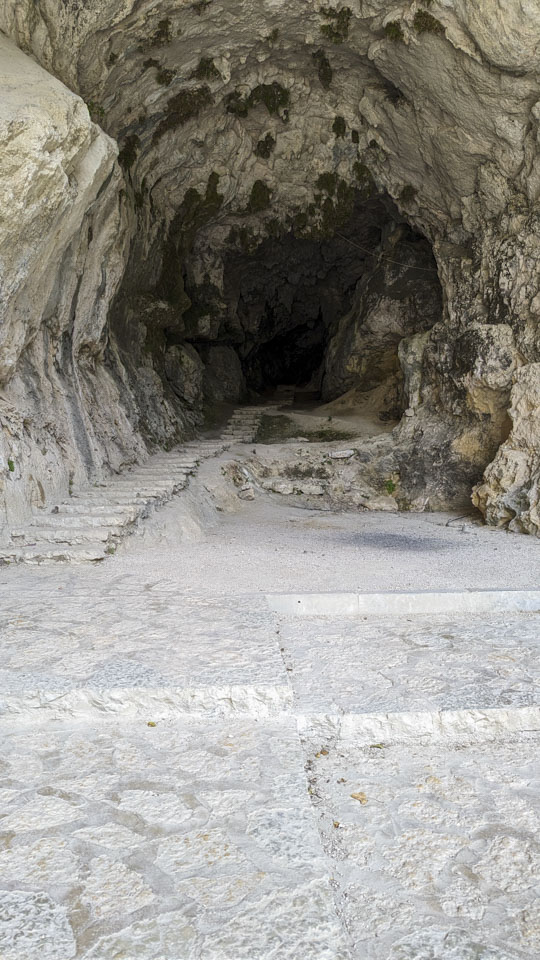
Linked to the phenomenon of female monasticism is the hermitage-oratory of Santa Maria infra Saxa, built starting from the early Middle Ages, located right next to the Temple of Valadier. Already mentioned in documents dating back to the year 1000, it is a small building leaning against the rock face and half suspended on the overhanging cliff. It was linked to a female monastic community whose monastery was presumably located on the top of the mountain and in the Cave of the Blessed Virgin the Benedictine nuns came to pray and practice asceticism. It is no coincidence that these places were chosen because they were not easily accessible and more isolated precisely to encourage the encounter with God and therefore full of spirituality, perpetuating the sacredness attributed to these places since prehistoric times.
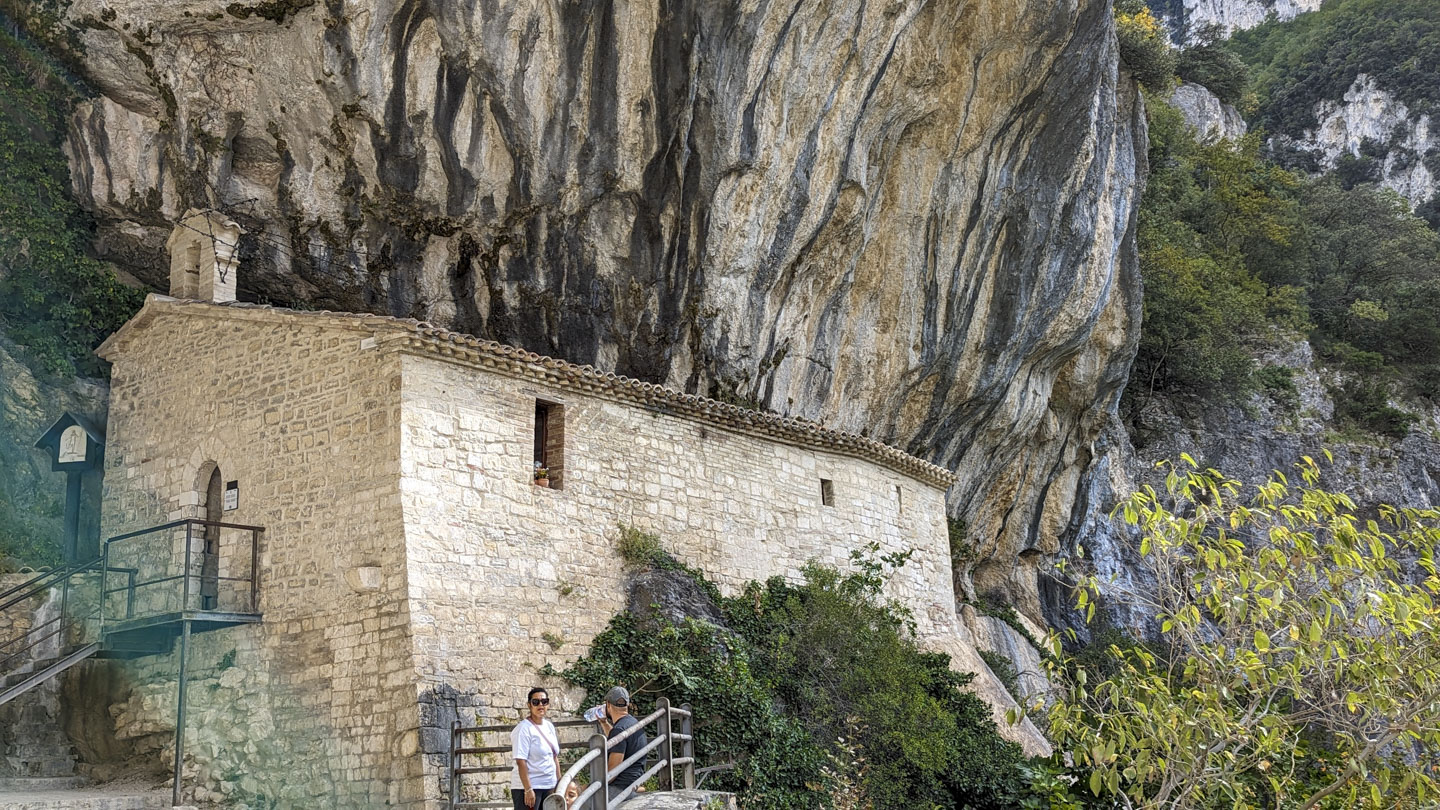
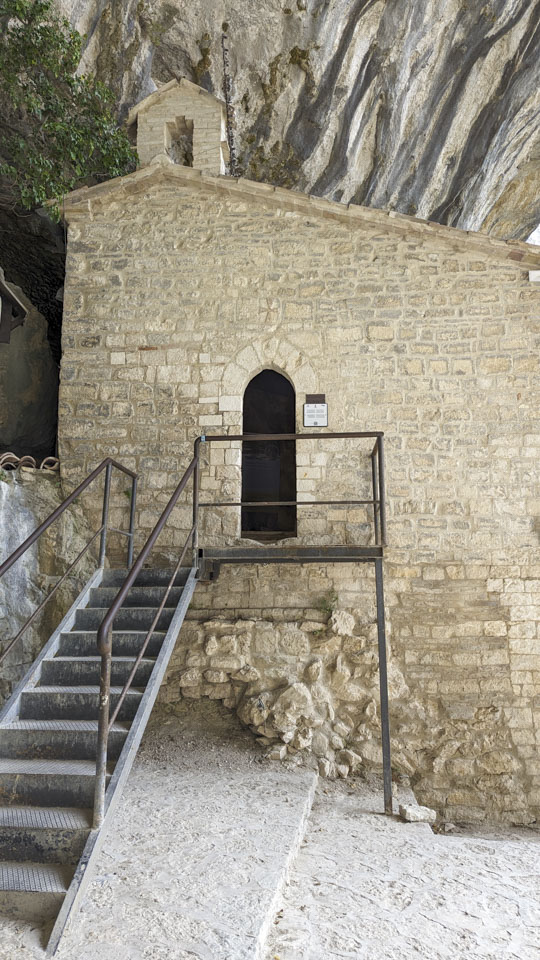
Inside Santa Maria infra Saxa a wooden image of the Virgin of the Mountains was venerated. Accidentally burned in the first half of the twentieth century, it was replaced by the current stone sculpture of the Madonna.
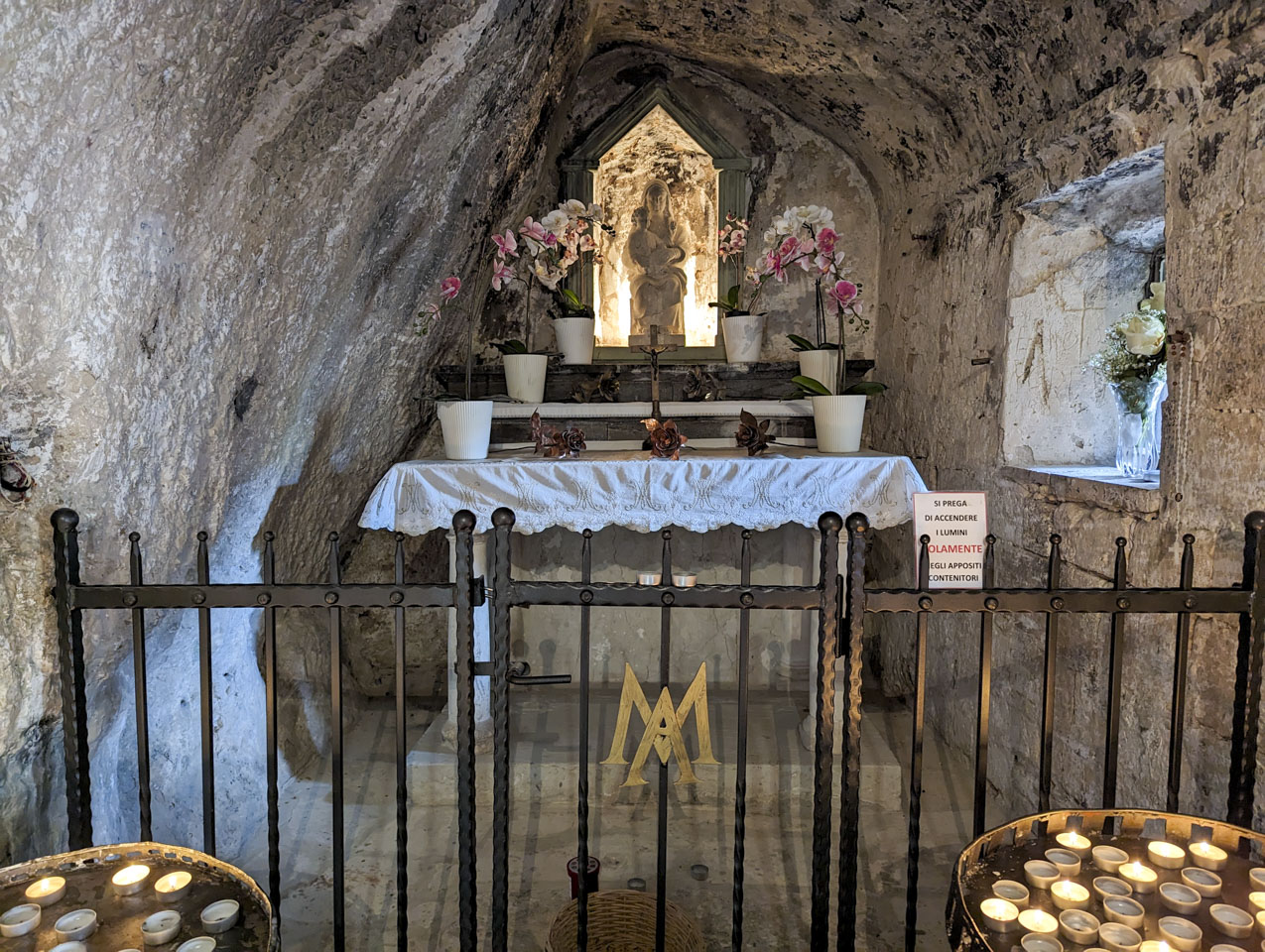
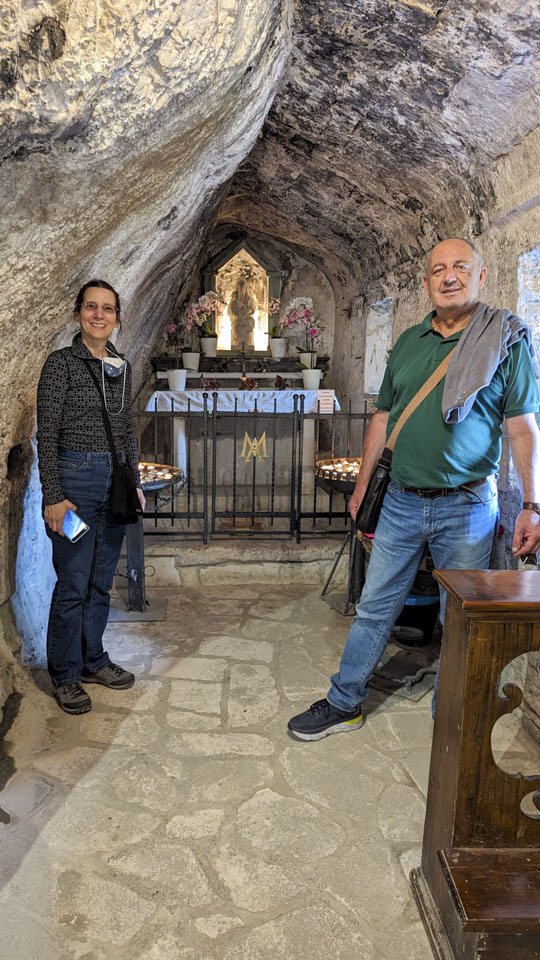
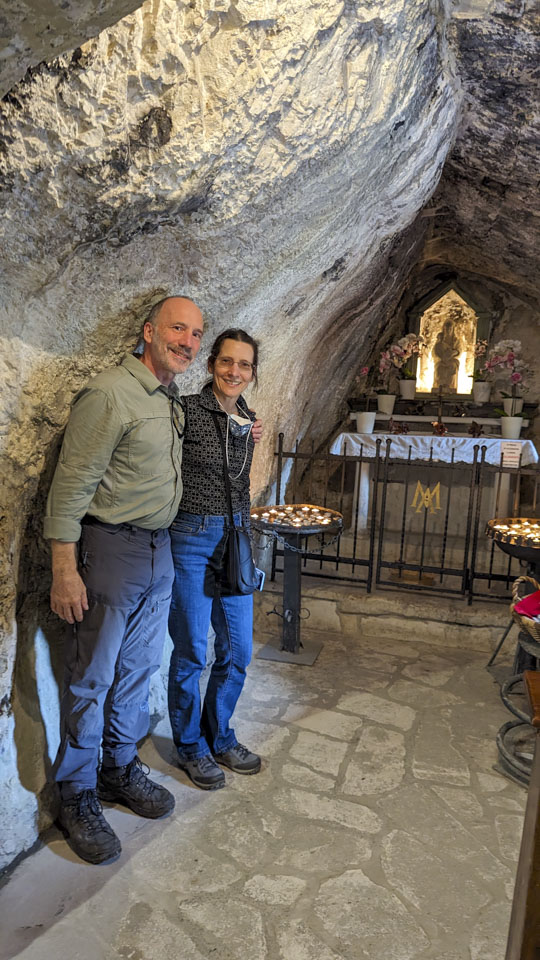
On our walk back down, there was a dog taking itself for a walk.
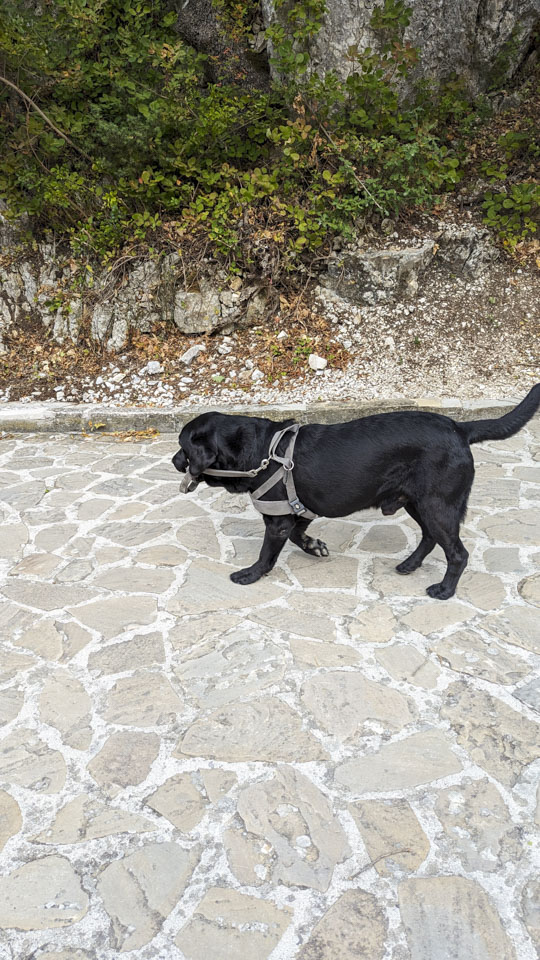
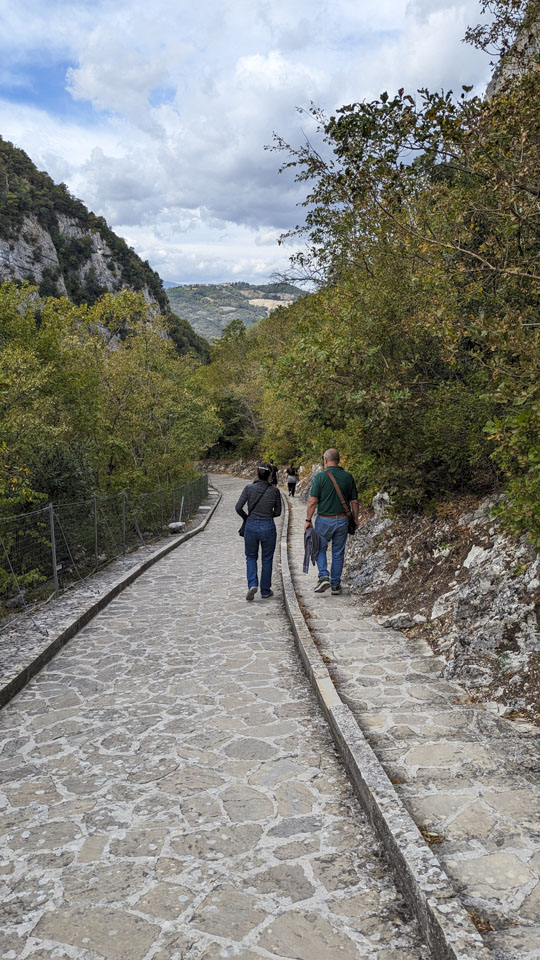
Francesco had made us reservations at a nearby restaurant, one of the few in the area, called Hostaria da Marianna. We learned that a popular pastime for Italians is to go touring around the countryside on Sundays. The restaurant was packed. Not only was it packed, but it was chaotic. We were there almost an hour before we saw any food. Fortunately the food was good, but we had arrived at 1:20 PM and did not leave until 4 PM.
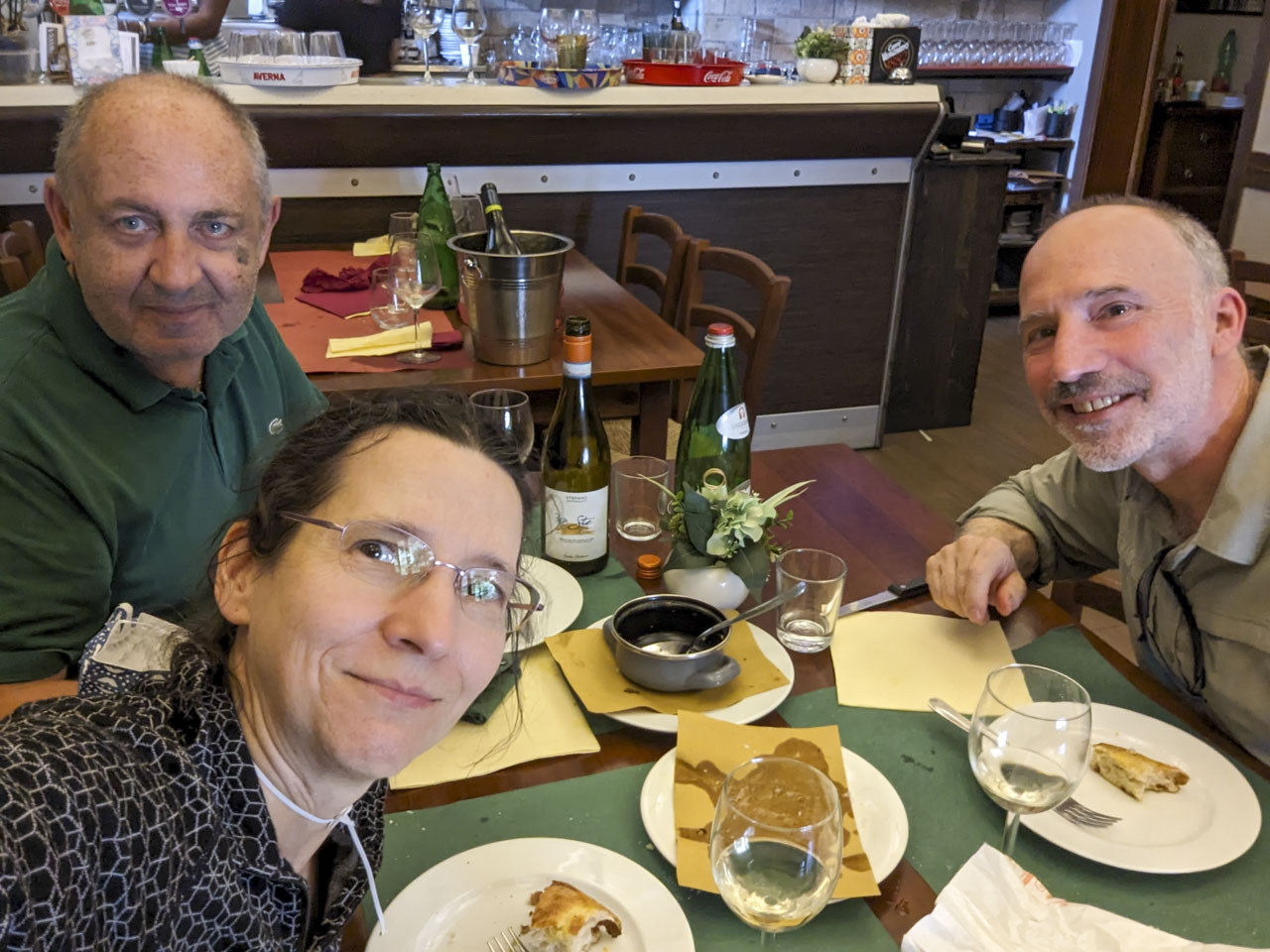
Updated January 2024